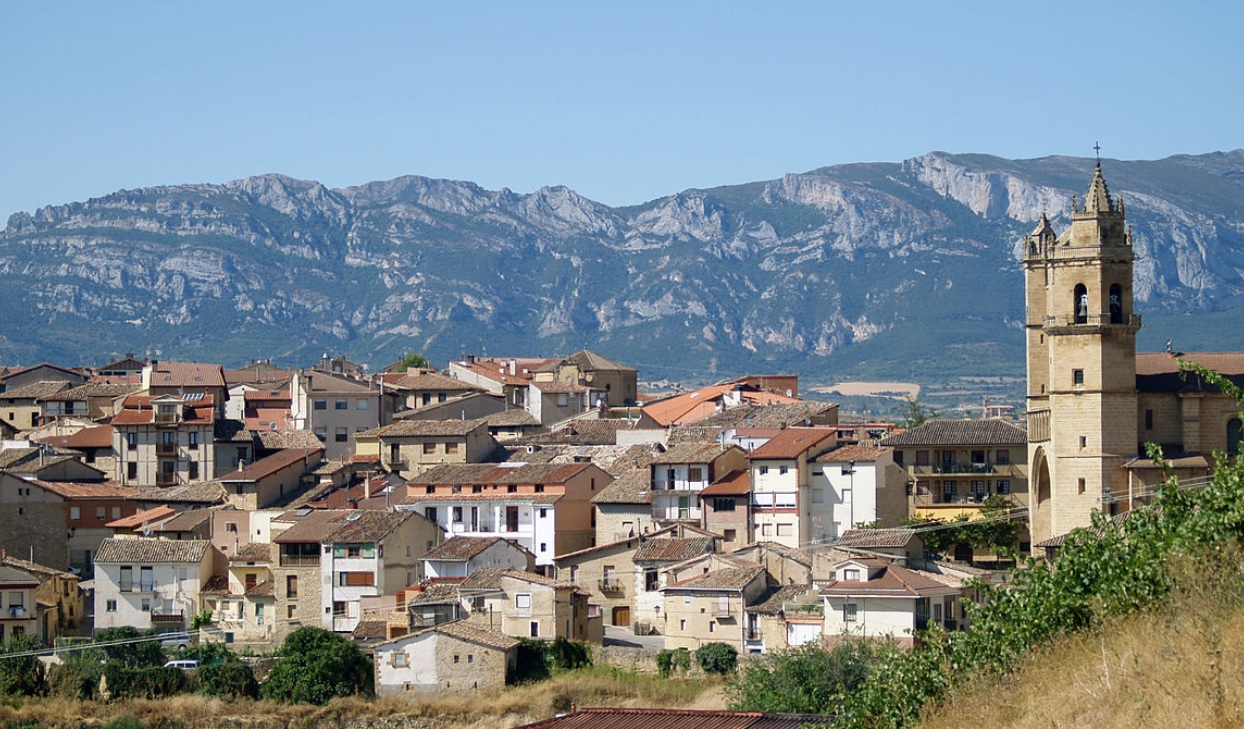Leaving the locals at Logrono to sleep off their hangovers before re-enacting slaying the French – again – we headed out in morning sunshine to Elciego (Eltziego in Basque).
A prosperous wine village, Elciego is in a southeastern-most corner of the Basque Country so we swapped tapas for pintxos and benefited from fully open shops and businesses, as the regional holiday was only in La Rioja, just across the border.
The lovely village of narrow and twisting stone streets is home to former palaces and merchant houses, decorated with stone livery and coats of arms, a dozen in total.

The palaces date from the 17th century and now, as then, are private residences. Their layouts are broadly similar, the ground floor would have been used for the practical function of the estate such as stabling, agricultural storage, woodworking or other equipment.
A huge central staircase would often be crowned by a skylight providing light flow between the floors. A kitchen, living/dining area and living/bedroom area would be arranged on the first floor, with further bedrooms on the second floor, if there was one.
Large, shuttered doors open out onto first floor iron balconies, some elegantly wrought in twists and decoration. Some of the more prestigious palaces have notable carpentry work including under the eaves where the beams, or modillions, are decoratively worked in patterns.

On a Friday morning the village bakery, grocery, gift shop, bank and newsagents were busy with a throughput of customers usually then finding their way for gossip and coffee at the central square’s pintxos bar.
We found a couple of seats for elevenses with a view of slumbering cats sunning on balconies above ancient and arched wooden doors.
Despite being on the famous Rioja wine route, very few people speak English, and having swapped Spanish for the Basque dialect once more, we played it safe with ‘dos cafés con leche y pequeña raciónes de tortilla’.

Elciego feels lost in its own time, but for a striking view from its southern walls. The Hotel Marques de Riscal is one of several strikingly designed buildings linked to wine making and tourism in La Rioja.
Designed by Frank Gehry, one of the world’s top architects, he is also responsible for Bilbao’s Guggenheim Museum. The hotel features a striking roofline of waves created by vast ribbons of titanium coloured in purple, pink, gold and silver.
It looks effortless but the engineering involved in supporting the structure must be enormous. Armed guards patrol its gates. Its carpark is discreetly tucked behind flowering bushes of azaleas.

Instead, we went around the corner to the Bodegas Muriel, makers of Simon’s favourite Rioja and usually sourced from our local Worthing Co-op when its on a knockdown deal for £8.
Today he was able to walk away with half a dozen unlabelled bottles of the ‘especial’ for the princely sum of €20, cash only. Our man on the Camino was grinning from ear to ear ahead of a happy toast that evening!


